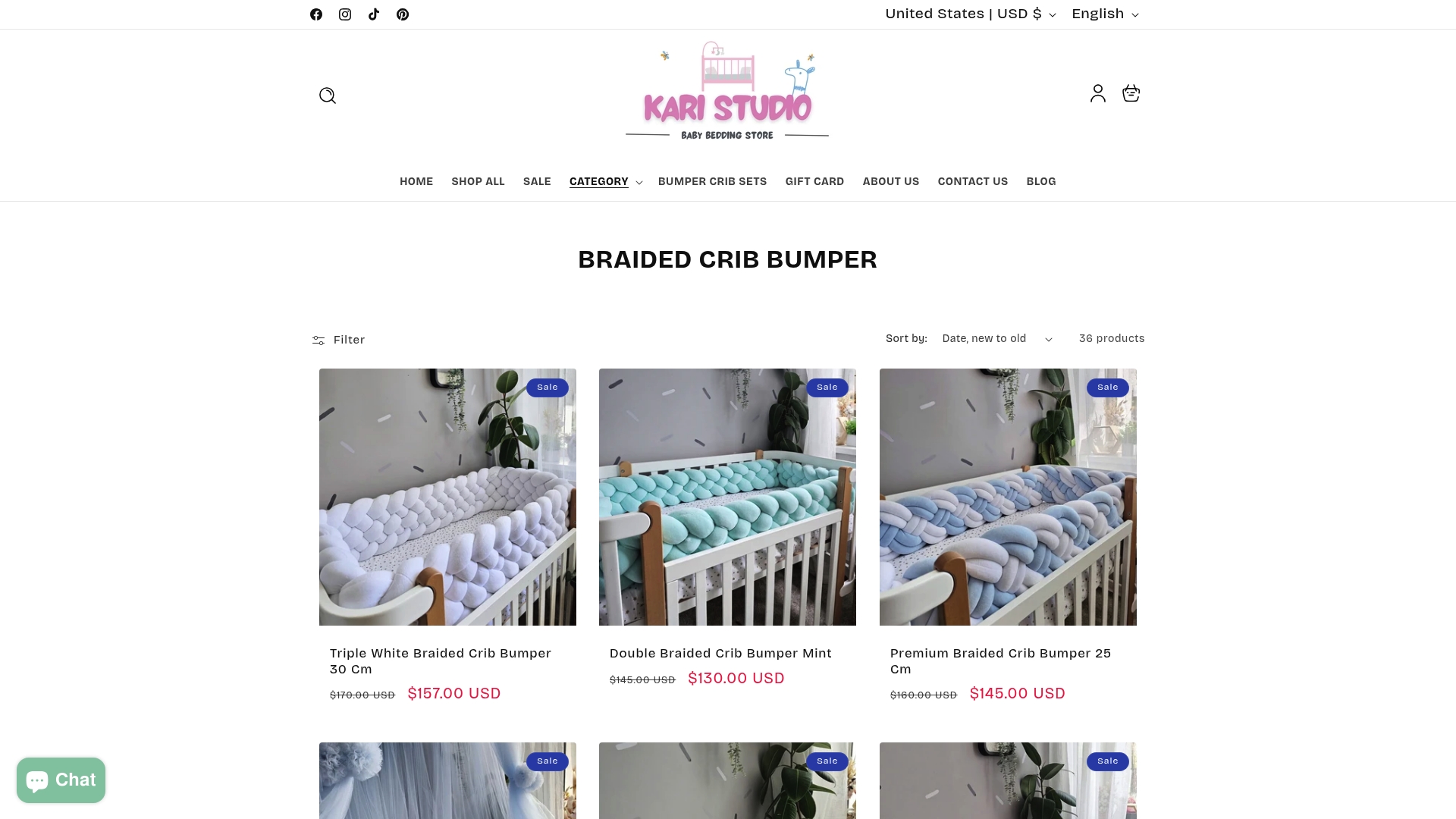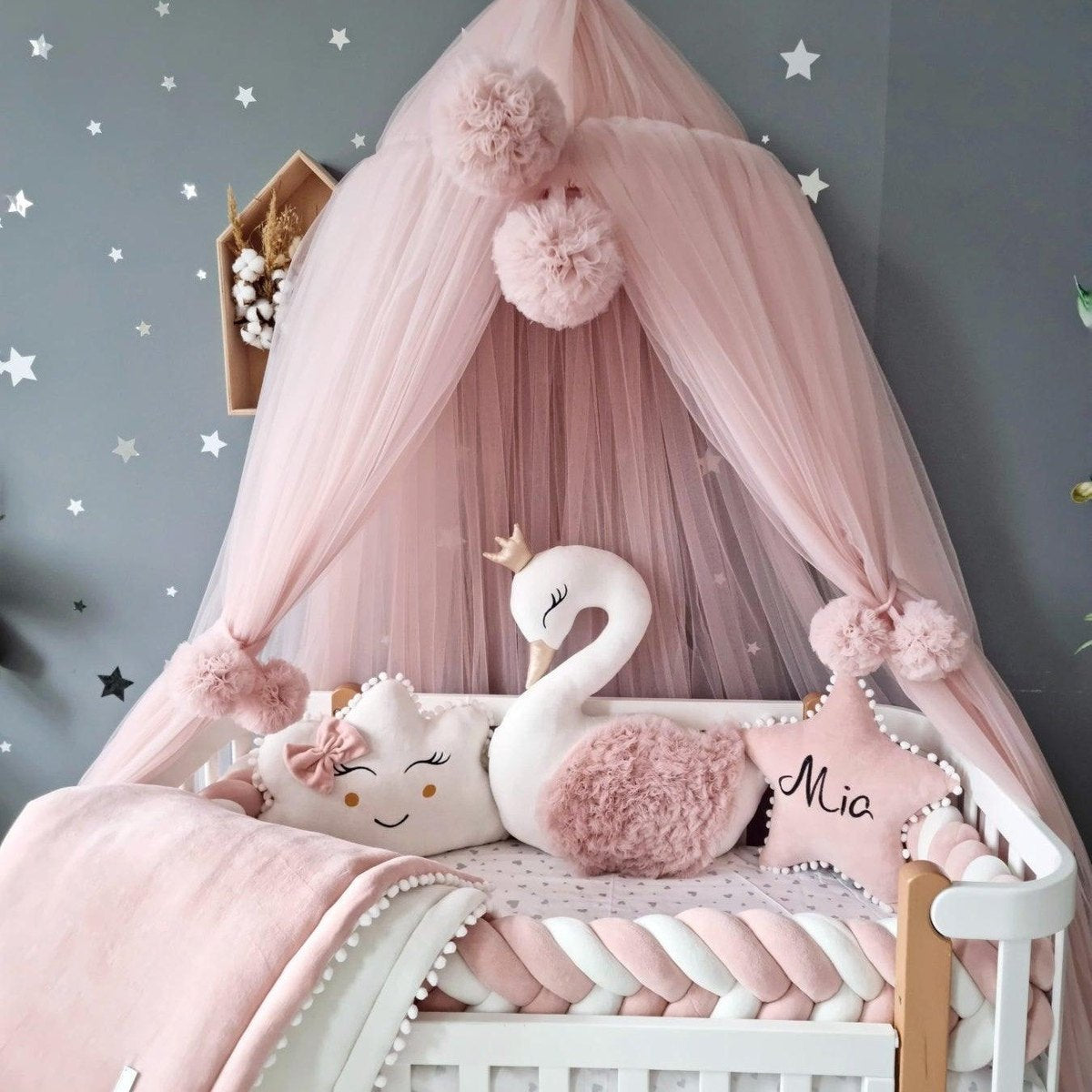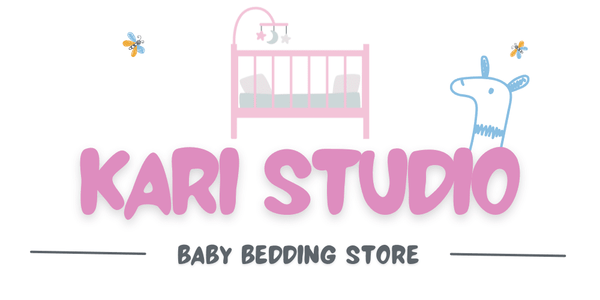Parents love the promise of clean sheets and peace of mind, but laundry day can feel like an endless chore. Machine washable bedding can cut your maintenance time in half while also helping prevent allergen buildup. Most people think picking any bedding labeled as washable will work. The real difference comes down to smart fabric choice, precise fit, and a few expert tricks you might not expect.
Table of Contents
- Understand The Benefits Of Machine Washable Bedding
- Choose The Right Fabric For Durability
- Check Care Instructions Before Buying
- Look For Hypoallergenic Options
- Consider Size And Fit For Different Cribs
- Explore Design Choices That Fit Your Nursery
- Tips For Maintaining Your Bedding’s Freshness
Quick Summary
| Takeaway | Explanation |
|---|---|
| Choose machine washable bedding for convenience. | Machine washable bedding saves time and money, eliminating the need for dry cleaning or hand washing. |
| Select durable fabrics like cotton or microfiber. | Fabrics like cotton blends and microfiber maintain quality through multiple washes, ensuring comfort and longevity. |
| Follow care instructions to maintain quality. | Care labels provide essential washing and drying guidelines that prevent damage and extend bedding lifespan. |
| Opt for hypoallergenic bedding for sensitive individuals. | Hypoallergenic materials reduce allergens like dust mites and pet dander, promoting a healthier sleeping environment. |
| Ensure proper sizing to enhance safety. | Accurate measurements of the crib and bedding prevent hazards from loose or oversized bedding, ensuring safe sleep for infants. |
1: Understand the Benefits of Machine Washable Bedding
Choosing machine washable bedding is a smart decision for parents, caregivers, and anyone seeking practical home textiles. These innovative bedding solutions offer remarkable advantages that simplify maintenance and enhance overall convenience.
Machine washable bedding provides significant time and energy savings compared to traditional fabrics that require specialized cleaning. When you select bedding that can withstand regular machine washing, you eliminate the need for expensive dry cleaning or delicate hand washing procedures.
The primary benefits of machine washable bedding include:
- Hygienic maintenance: Easy to clean thoroughly, reducing allergen and bacteria buildup
- Cost effectiveness: Eliminates professional cleaning expenses
- Time efficiency: Quick and simple laundering process
Beyond convenience, machine washable bedding offers substantial practical advantages. Parents of young children understand the critical importance of maintaining clean sleeping environments. Discover our comprehensive guide on cleaning methods for baby bedding to understand the nuances of different washing techniques.
Modern fabric technologies have dramatically improved machine washable bedding’s durability and performance. Manufacturers now create textiles that maintain color integrity, shape retention, and softness even after multiple wash cycles. These advanced materials resist shrinkage, fading, and wear, providing long lasting comfort and aesthetic appeal.
When selecting machine washable bedding, consider fabrics like cotton blends, microfiber, and specially treated synthetics. These materials offer exceptional washability while preserving their original quality. By prioritizing machine washable options, you invest in practical, low maintenance bedding that simplifies your household routine and ensures consistent cleanliness.
2: Choose the Right Fabric for Durability
Selecting the right fabric is crucial when investing in machine washable bedding. Not all materials are created equal, and understanding the characteristics of different textiles will help you make an informed decision that balances comfort, durability, and ease of maintenance.
Cotton remains a perennial favorite for machine washable bedding. Its natural fibers offer breathability, softness, and excellent durability. Specifically, 100% cotton and cotton blends provide superior performance during repeated washing cycles. These fabrics maintain their structural integrity and comfort level, making them an ideal choice for those seeking long lasting bedding.
Synthetic fabrics also present compelling options for machine washable bedding:
- Microfiber: Extremely lightweight and resistant to wrinkles
- Polyester blends: Offers enhanced durability and quick drying capabilities
- Performance fabrics: Engineered to withstand frequent washing and maintain color vibrancy
According to textile research from Cornell University, fabric construction plays a significant role in determining washability and longevity. Tighter weaves and higher thread counts typically indicate superior durability and resistance to wear.
When evaluating machine washable bedding fabrics, consider additional factors beyond basic material composition. Fabric weight, thread count, and weave density all contribute to overall performance. Lightweight fabrics might feel softer initially but could deteriorate faster, while heavier fabrics often provide more substantial and enduring protection.
Some advanced fabric technologies now incorporate moisture wicking properties and antimicrobial treatments. These innovative features enhance the practical value of machine washable bedding, providing additional benefits beyond basic cleanliness. By carefully selecting fabrics that combine durability, comfort, and advanced technological features, you can ensure your bedding remains in excellent condition through countless wash cycles.
3: Check Care Instructions Before Buying
Care instructions are the critical blueprint for maintaining machine washable bedding, serving as a roadmap to preserve your textile investment. Manufacturers provide specific guidelines that outline the optimal washing, drying, and handling procedures for each unique fabric type.
Careful examination of care labels reveals essential information about proper maintenance. These small tags contain vital symbols and instructions that communicate exactly how to launder your bedding without compromising its quality or appearance.
Key elements to scrutinize on care labels include:
- Water temperature recommendations
- Appropriate wash cycle settings
- Drying instructions
- Ironing guidelines
- Special handling requirements
Learn more about natural washing techniques for delicate nursery textiles to supplement your understanding of specialized care methods. Professional textile experts recommend paying close attention to these nuanced instructions to prevent potential damage.
Some bedding materials require specific temperature constraints or specialized detergents. For instance, delicate fabrics might mandate cold water washing, while more robust materials can withstand warmer temperatures. Ignoring these guidelines could result in shrinkage, color fading, or structural degradation of your bedding.
Beyond basic washing instructions, consider additional factors like potential color bleeding, fabric sensitivity, and recommended frequency of washing. According to textile research from consumer protection agencies, improper washing can significantly reduce the lifespan of your bedding.
By investing time to thoroughly understand and follow care instructions, you protect your financial investment and ensure your machine washable bedding remains in optimal condition for years to come. This proactive approach guarantees both aesthetic appeal and functional performance, making your purchasing decision more strategic and rewarding.
4: Look for Hypoallergenic Options
Hypoallergenic bedding represents a critical consideration for individuals with sensitive skin, allergies, or respiratory conditions. Selecting the right hypoallergenic textiles can significantly reduce potential health risks and provide a safer sleeping environment.
Hypoallergenic materials are specifically designed to minimize allergic reactions by preventing the accumulation of common irritants. These fabrics undergo specialized manufacturing processes that create barriers against:
- Dust mites
- Pet dander
- Pollen particles
- Microscopic allergen buildup
Explore our comprehensive guide on maintaining a safe nursery environment to understand the broader implications of textile selection for health-conscious families.
According to research from the Asthma and Allergy Foundation of America, individuals with allergic sensitivities can experience significant symptom reduction by choosing appropriate bedding materials. Natural fibers like organic cotton and bamboo offer inherent hypoallergenic properties, providing breathable and gentle textile options.
When evaluating hypoallergenic bedding, consider additional protective features such as antimicrobial treatments and tightly woven fabric structures. These advanced characteristics create additional barriers against potential allergen penetration, enhancing the overall protective qualities of the textile.
Modern hypoallergenic bedding technologies have expanded beyond traditional materials. Innovative synthetic blends now incorporate advanced molecular structures that actively repel allergens and maintain superior breathability. By prioritizing these sophisticated textile solutions, you can create a healthier sleeping environment that supports respiratory wellness and reduces potential allergic triggers.
5: Consider Size and Fit for Different Cribs
Selecting machine washable bedding that perfectly fits your crib is more complex than simply choosing an attractive design. Precise measurements are crucial to ensuring safety, comfort, and proper functionality for your baby’s sleeping environment.
Learn how to choose the right crib for your nursery and understand the importance of accurate sizing. Standard cribs typically have consistent dimensions, but variations do exist that can impact bedding selection.
Crib size considerations include:
- Standard crib dimensions: Typically 28 x 52 inches
- Mini crib sizes: Approximately 24 x 38 inches
- Convertible crib variations: May require specialized fitting
According to pediatric sleep research from the American Academy of Pediatrics, improper bedding fit can create significant safety risks. Loose or oversized bedding can potentially lead to suffocation hazards, making precise measurements essential.
Beyond basic dimensions, consider additional factors such as mattress thickness and crib rail height. Fitted sheets should be tight and secure, with minimal excess fabric that could bunch or create potential entanglement risks. Modern machine washable bedding often comes with elasticized edges specifically designed to provide a snug, secure fit across various crib models.
For parents navigating the nuanced world of infant bedding, investing time in careful measurement pays significant dividends. Precision matters more than aesthetic preferences when it comes to creating a safe, comfortable sleeping environment for your baby. Take detailed measurements of your specific crib model, comparing them carefully with bedding specifications before making a final purchase.
6: Explore Design Choices That Fit Your Nursery
Selecting machine washable bedding that complements your nursery’s aesthetic requires a strategic approach that balances functionality with visual appeal. Design choices play a crucial role in creating a cohesive and inviting space for your little one.
Discover inspiring nursery decor ideas to help you understand how bedding design can transform your infant’s sleeping environment. Contemporary nursery design embraces versatility and personalization.
Key design considerations include:
- Color palette coordination
- Texture and pattern selection
- Thematic consistency
- Visual stimulation potential
According to developmental psychology research, visual stimulation through thoughtful design can support early cognitive development. Soft, muted color schemes with gentle patterns can create a calming environment that promotes restful sleep while engaging infant sensory perception.
Modern machine washable bedding offers unprecedented design flexibility. Manufacturers now produce collections that seamlessly blend practical maintenance requirements with sophisticated aesthetic choices. Neutral tones with subtle geometric patterns or minimalist designs have emerged as particularly popular options, providing versatility across evolving nursery themes.
Beyond visual aesthetics, consider how design choices interact with your specific nursery environment. Lighter colors can make smaller spaces feel more expansive, while darker or more intricate patterns can add depth and visual interest to larger rooms. The goal is to create a harmonious design that feels both intentional and adaptable as your child grows.
7: Tips for Maintaining Your Bedding’s Freshness
Maintaining the freshness of machine washable bedding requires more than routine cleaning. Strategic care techniques can significantly extend the lifespan and quality of your infant’s bedding, ensuring a hygienic and comfortable sleeping environment.
Explore comprehensive storage techniques for baby bedding to complement your maintenance routine. Proper storage plays a crucial role in preserving textile quality between wash cycles.
Essential maintenance strategies include:
- Rotate bedding sets regularly
- Wash before visible soiling occurs
- Use gentle, baby-safe detergents
- Avoid fabric softeners
According to textile care research from the American Cleaning Institute, temperature and detergent selection dramatically impact fabric longevity. Warm water around 104°F effectively removes bacteria without causing significant fabric degradation.
Additional preservation techniques involve careful drying processes. Line drying or using low heat settings can prevent unnecessary fabric stress, maintaining the structural integrity of machine washable bedding. Direct sunlight offers natural disinfection properties, helping eliminate potential bacterial growth while keeping textiles fresh.
Professional textile experts recommend implementing a proactive maintenance schedule. This approach involves pre-treating potential stain areas, using mild detergents specifically designed for infant textiles, and avoiding harsh chemical treatments. By adopting these strategic care methods, you can ensure your machine washable bedding remains soft, clean, and functional throughout its lifecycle.
Below is a comprehensive table summarizing the core tips, benefits, and considerations for choosing machine washable bedding, providing an at-a-glance overview of the entire article’s key content.
| Tip / Section | Key Points & Benefits |
|---|---|
| Understand the Benefits | Machine washable bedding saves time and energy, improves hygiene, and is cost-effective compared to dry cleaning. |
| Choose the Right Fabric for Durability | Opt for 100% cotton, cotton blends, or microfiber for lasting quality; consider weave density and fabric technology. |
| Check Care Instructions | Always follow manufacturer care labels for optimal washing, drying, and ironing to preserve fabric lifespan. |
| Look for Hypoallergenic Options | Hypoallergenic bedding reduces allergens; look for natural fibers (organic cotton, bamboo) and antimicrobial features. |
| Consider Size and Fit | Accurate sizing ensures safe, snug bedding; measure your crib and select fitted sheets to avoid safety hazards. |
| Explore Design Choices | Coordinate bedding with nursery themes; choose calming colors, suitable patterns, and adjust designs for room size. |
| Tips for Maintaining Freshness | Rotate bedding, wash before heavily soiled, use gentle detergents, and line dry to extend fabric quality and comfort. |
Experience Effortless Cleanliness and Comfort with Kari Studio Nursery Bedding
Struggling to keep your baby’s bedding clean and safe can feel overwhelming, especially with the constant demands of parenting. Our article on choosing machine washable bedding highlights the need for time-saving, hypoallergenic, and perfectly fitting solutions. At Kari Studio, we have turned these needs into reality through our curated selection of Handmade Cot Bumper Sets and Bumper Crib Sets designed specifically for modern families who value both convenience and peace of mind.

Why wait to update your nursery with high-quality, machine washable bedding that matches your unique style and delivers true comfort? Browse our global collection of braided crib bumpers or explore beautiful cot bumper sets for girls to find the perfect fit. Your next easy-care bedding solution is waiting at Kari Studio. Shop today for a fresher, safer nursery environment.
Frequently Asked Questions
What are the key benefits of choosing machine washable bedding?
Choosing machine washable bedding simplifies maintenance, saves time, and improves hygiene by making it easier to clean. Opt for bedding that can withstand frequent washing to reduce allergen buildup and eliminate the need for expensive dry cleaning.
How do I select the right fabric for machine washable bedding?
When selecting machine washable bedding, look for durable fabrics such as 100% cotton, cotton blends, or microfiber that can endure multiple wash cycles. Aim for materials that offer breathability and excellent washability to prolong the life of your bedding.
What care instructions should I look for when buying machine washable bedding?
Examine the care instructions on bedding labels to understand the optimal washing, drying, and ironing practices for each fabric type. Following these guidelines will help prevent shrinkage, fading, or damage, ensuring your bedding remains in good condition over time.
How can I determine if bedding is hypoallergenic?
Check for labels that indicate hypoallergenic properties, which can minimize allergic reactions by reducing allergens like dust mites and pet dander. Look for natural fibers like organic cotton or bamboo that inherently resist allergens, providing a healthier sleeping environment.
Why is the fit of bedding important for cribs?
A proper fit prevents safety hazards associated with loose or oversized bedding, which can pose suffocation risks. Measure your crib dimensions carefully and choose fitted sheets designed specifically for your crib type to ensure a snug fit.
What tips can I use to maintain the freshness of my machine washable bedding?
Maintain freshness by rotating your bedding sets regularly and washing before visible soiling occurs. Use gentle, baby-safe detergents, avoid fabric softeners, and consider line drying to preserve fabric quality and extend the lifespan of your bedding.

